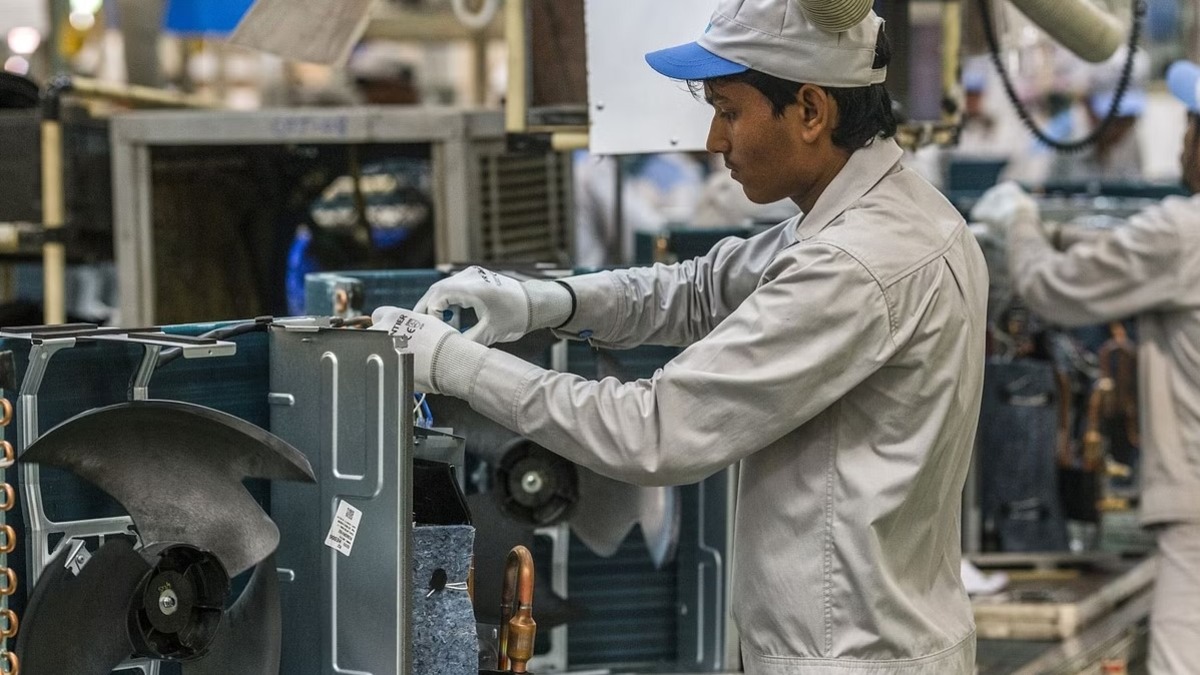Foreign direct investment
Public policy considerations for climbing global value chains in Asia
Published 06 June 2023
Global value chains (GVC) are drivers of development, able to bring many socio-economic benefits to the regions they touch down in. Both horizontal engagement—increasing a region’s capacity to engage with GVCs—and vertical engagement—actively seeking foreign direct investment (FDI) for upgrading—represent useful avenues for localities to climb global value chains.
Bengaluru, or Bangalore, India, is one of the world’s leading cities, currently raising its socio-economic standards faster than nearly all of its global peers. Since its 1898 plague, the city has achieved this growth rate in part due to public policy considerations that are sensitive to international developments and GVCs. Specifically, whether this be in the late 19th century connecting the city to itself with telephone lines, or early 21st century connecting the city to the world with industrial zones for the burgeoning telecommunications sector, Bangalore’s decision makers have seemingly always upgraded their trajectory. The city is dynamically specializing, using public policy to find new competitive niches, and often leveraging FDI to achieve its aims.
A recently published Hinrich Foundation White Paper, ‘Climbing up global value chains: Leveraging FDI for economic development’1 brings new evidence on cities like Bengaluru and others underpinning Asia’s role in GVCs.2 It shares empirical evidence on what public policy can do to change trajectories. These GVC-sensitive policies represent a new approach to value upgrading.
To deliver effective change, there are three main considerations. GVC mapping—understanding upgrading needs; GVC-sensitive horizontal engagement—policies that facilitate regional interaction with GVCs; GVC-sensitive vertical engagement—policies that actively participate with GVCs.
The first consideration for climbing global value chains is GVC mapping. This primary action is crucial to understand upgrading needs. The understanding is necessary because all GVCs are different and different localities will be on different upgrading journeys through the value chain. While learning from others is useful, copying others may be detrimental. Thus, understanding where a region is on its trajectory in climbing GVCs and where it wants to go is crucial before leveraging public policy.
For multinational enterprises (MNEs) to be able to transfer the knowledge they possess through FDI flows, the receiving host region must be able to absorb and benefit from it. GVC-sensitive horizontal engagement does this, raising the floor of a region’s absorptive capacity and facilitating their link up to GVCs.
In order to achieve this, as expected, connectivity is important—whether this be by hard infrastructure e.g. ports, rail, roads, or soft infrastructure e.g. logistics, customs, and institutions. The important difference when viewing infrastructure development with GVC-sensitive lens is that some connectivity will be more important than others. For example, if a region buys intermediate goods to produce its exports, then air connection—specifically freight infrastructure—should be prioritized. Contrastingly, rail and port facilitate value added across the whole value chain. When using a GVC-sensitive lens, cross-border infrastructure to facilitate the easy flow of goods and services across borders becomes more important.
As with infrastructure provision, higher levels of human capital are associated with GVC participation. This knowledge facilitates a region to absorb knowledge from elsewhere and upgrade.3 One way of achieving this is through successful partnerships between academic or skill training institutions and firms working in GVCs which ensure a pipeline of knowledge that suits firms’ future needs. This connection sees workers climb the value chain into higher value-added jobs—driving wider regional economic development.
The third important consideration is that in some cases, actively seeking to couple local assets with the aspirations of GVC actors—specifically MNEs—will help steer the process of climbing GVCs. This GVC-sensitive vertical engagement is favored for emerging economies, being particularly significant in building, embedding, and reshaping GVCs within nations.4
One such significant category of organizations is Investment Promotion Agencies (IPAs), which act as a powerful tool to help steer the upgrading journey. When functioning well, they can act as a matchmaker between regional assets and the needs of firms in GVCs. This role brings wider benefits with productivity spillovers shown to be higher when foreign firms are targeted by investment promotion efforts.5 Importantly for lagging areas, IPAs—particularly those functioning at a sub-national level—can help overcome many of the failures often taking place that are inhibiting FDI.
Another important consideration associated with IPAs, for climbing the GVC is aftercare services. They are present for existing firms and investors encouraging and facilitating the repeated investment in a region or on a certain task. Climbing the value chain and upgrading with existing firms, leveraging reinvestment is potentially more likely—and arguably easier—to lead to vertical upgrading than upgrading with new firms.
The white paper6 offers many examples of both successful and unsuccessful GVC mapping, GVC-sensitive horizontal and GVC-sensitive vertical policies. It is important to learn from success and failure alike. While it may be tempting to see what has worked elsewhere and repeat, it is crucial to map current places on GVCs as well as the intended trajectory before applying policy decisions.7 With this knowledge of position and direction, a GVC-sensitive framework is usefully applied.
***
[1] Available at https://www.hinrichfoundation.com/research/wp/fdi/global-value-chains-gvc-foreign-direct-investment-fdi-economic-development/
[2] As outlined in the companion blog to this piece found here https://www.hinrichfoundation.com/research/article/fdi/upgrading-global-value-chains-gvc-in-asia/
[3] Yameogo, N. D. and K. Jammeh (2019). “Determinants of Participation in Manufacturing GVCs in Africa: The Role of Skills, Human Capital Endowment, and Migration. .” Policy Research Working Paper 8938, World Bank.
[4] Gereffi, G. and T. Sturgeon (2013). “Global value chain-oriented industrial policy: the role of emerging economies.” Global value chains in a changing world 329.
[5] See Du, L., A. Harrison and G. Jefferson (2011). “Do institutions matter for FDI spillovers? The implications of China’s “special characteristics”, Harding, T. and B. S. Javorcik (2011). “Roll out the red carpet and they will come: Investment promotion and FDI inflows.” The Economic Journal 121(557): 1445-1476 and Crescenzi, R., Di Cataldo, M., Giua, M. (2021) "FDI inflows in Europe: Does investment promotion work?", Journal of International Economics, 132, 10349, covering sub-national regional IPAs.
[6] Available at https://www.hinrichfoundation.com/research/wp/fdi/global-value-chains-gvc-foreign-direct-investment-fdi-economic-development/
[7] This kind of research is briefly outlined in the companion blog to this piece found here https://www.hinrichfoundation.com/research/article/fdi/upgrading-global-value-chains-gvc-in-asia
© The Hinrich Foundation. See our website Terms and conditions for our copyright and reprint policy. All statements of fact and the views, conclusions and recommendations expressed in this publication are the sole responsibility of the author(s).










